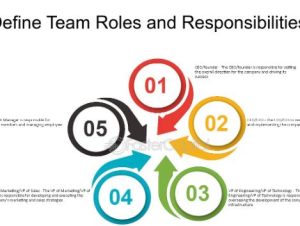When Are Staff Meetings Usually Held?
Staff meetings are a cornerstone of effective workplace communication and management, playing a critical role in keeping team members aligned with organizational goals and current on various projects. The timing of these meetings can significantly impact their effectiveness and the productivity of the team.

Optimal Timing for Staff Meetings
Start of the Work Week
Many organizations choose to hold staff meetings at the start of the work week, often on Monday mornings. This timing is strategic as it helps set the tone and agenda for the week ahead. It allows teams to align their priorities and update each other on their planned tasks. According to a survey by a leading business consultancy, approximately 30% of companies prefer Monday morning meetings to ensure a strong start to the week.
Mid-Week Check-Ins
Mid-week meetings, typically held on Wednesdays, serve as a check-in point for many teams. These meetings are crucial for addressing any mid-course corrections and refreshing team focus. They can be particularly useful in dynamic environments where projects progress rapidly and adjustments are frequently needed. Data shows that mid-week staff meetings can help improve team productivity by up to 20% by keeping projects on track and maintaining momentum.
End of the Week Reviews
Friday meetings are common in workplaces that need to wrap up the week's activities and plan for the following week. These meetings often focus on reviewing accomplishments, discussing challenges, and strategizing for future tasks. About 25% of teams find Friday meetings effective for closure and preparation, making them less about immediate action and more about reflection and forward planning.
Considerations for Scheduling Staff Meetings
Cultural and Operational Context
The ideal timing for staff meetings can vary significantly depending on the organizational culture and operational needs. For instance, companies with flexible work policies might find that mid-day meetings are more productive, as they accommodate various work schedules. In contrast, organizations with a standard 9-to-5 operation might prefer early morning meetings to ensure maximum attendance and attention.
Employee Input and Preferences
Incorporating employee preferences into the scheduling of staff meetings can lead to higher engagement and productivity. A Gallup poll indicated that when employees have a say in meeting times, their likelihood of active participation increases by 34%. This approach not only respects individual work rhythms but also enhances the overall effectiveness of the meetings.
Frequency and Duration
The frequency and duration of staff meetings are also critical considerations. While weekly meetings are common, the specific needs of the project or team might call for more or less frequent gatherings. Additionally, keeping meetings concise—typically between 30 to 60 minutes—ensures that they are efficient and maintain team members’ focus.
Conclusion: Maximizing Meeting Effectiveness
Determining when staff meetings are usually held is more than a matter of logistical convenience; it is about optimizing team performance and communication. By choosing strategic times for these meetings and considering the unique dynamics of their teams, leaders can significantly enhance the productivity and satisfaction of their staff, leading to better overall outcomes for their projects and organizational goals.